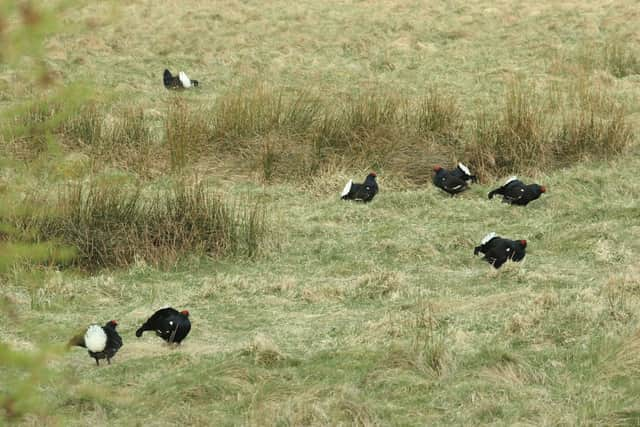Working together to help Scotland's grouse species to survive and thrive - Hugo Straker
The Practical Conservation for Scotland’s Grouse Species event will examine the current status of red grouse, black grouse, capercaillie and ptarmigan, the challenges they face, both emerging and in the future, and the opportunities that we have and steps to take to support their success or, indeed, survival.
An impressive line-up of speakers from right across the sector includes Patrick Laurie, farmer, author and conservationist, speaking on tartan strongholds for black grouse; Dr Kathy Fletcher, GWCT, on ptarmigan; Matthew Colston of Elanco Animal Health on tackling tick; Dr Beth Wells of the Moredun Research Institute on Louping ill, surveillance and vaccine development; Ross Ewing, Director of Moorland, Scottish Land and Estates on the Wildlife Management (Grouse) Bill, and Ian Coghill, GWCT, urging us to “listen to the science”.
Advertisement
Hide AdAdvertisement
Hide AdIn the afternoon delegates will hear from Bruce Cooper, specialist land management consultant on red grouse and waders; Dr Nick Hesford, GWCT, on the vital role of evidence gathering through the Epicollect mobile app; Professor Neil Metcalfe, University of Glasgow, speaking about the capercaillie conundrum; and Rory Kennedy, Director GWCT Scotland, calling for collective action for capercaillie.


Patrick Laurie says:
"Black grouse have declined sharply across the Southern Uplands over the last thirty years, and they're now beyond the point of no return in many parts of Galloway, Ayrshire and the Borders. We've known that these birds have been experiencing problems since the Second World War, but conservation effort is often patchy and focussed upon short-term projects which fail to deliver meaningful or lasting change. If it really is too late to save black grouse in Southern Scotland, we need to use this sad story as a warning in other parts of the country where the birds are doing better. No species is immune to decline or loss - we can't afford to be complacent".
Bruce Cooper will be highlighting what he says is “the worrying trend of green washing amongst a new era of laird, currently snapping up much of Scotland’s prime moorland. Lands once rich in moorland species such as lapwing, oystercatcher, curlew and, of course, red grouse are coming under threat along with the communities and traditions that surround them.”
Rory Kennedy comments: “Last year, NatureScot’s Scientific Advisory Committee was tasked with reviewing the mass of scientific literature pertaining to Scotland’s capercaillie, distilling this down to four key actions necessary to save the species from local extinction within 20 - 30 years. The chair of the report, Professor Neil Metcalfe, will talk about this process and its findings. Having achieved this clear roadmap, this process is once again mired in politics and ideology, so we need to think about how we address policy implications and take the necessary steps to convert the SAC report into meaningful action.”
Hugo Straker, Senior Scottish Adviser, Game & Wildlife Conservation Trust
Comments
Want to join the conversation? Please or to comment on this article.